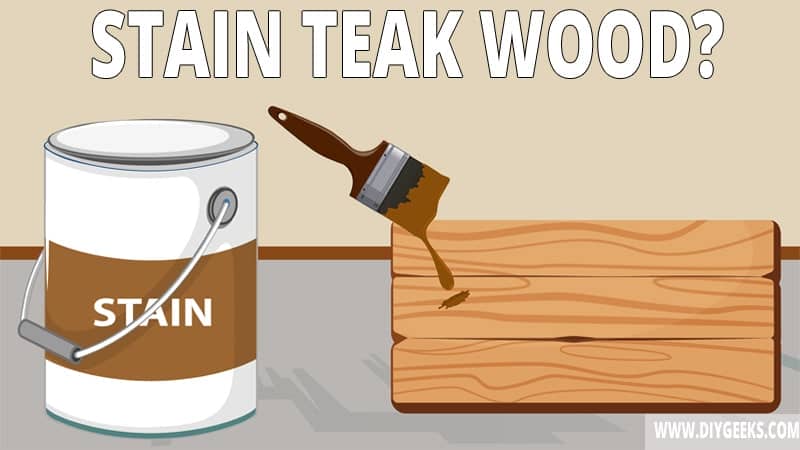Teak wood is derived from the teak tree (known as Tectona grandis). It’s a tropical hardwood and is considered one of the finest woods. You can stain Teak wood because it’s a type of hardwood that accepts wood stain evenly because of its pores and porous texture.
To stain Teak wood, prep the surface, sand the surface, apply sanding sealer, and apply wood stain.
It’s recommended to use an oil-based stain over Teak wood as its solvent (natural or synthetic oil) is compatible with the wood’s natural oils.
Does Teak Wood Accept Wood Stain?
Teak wood does accept wood stain because it’s a type of hardwood. All types of hardwood accept wood stain evenly because they have a porous texture and their pores and scattered across the surface, which helps for an even absorption.
You must sand and apply sanding sealer before staining Teak wood. Sanding will remove imperfections from the surface and create a more textured layer to improve adhesion. Sanding sealer will seal large pores of the surface and prevent over-absorption.
Which Wood Stain Types Can You Use on Teak Wood?
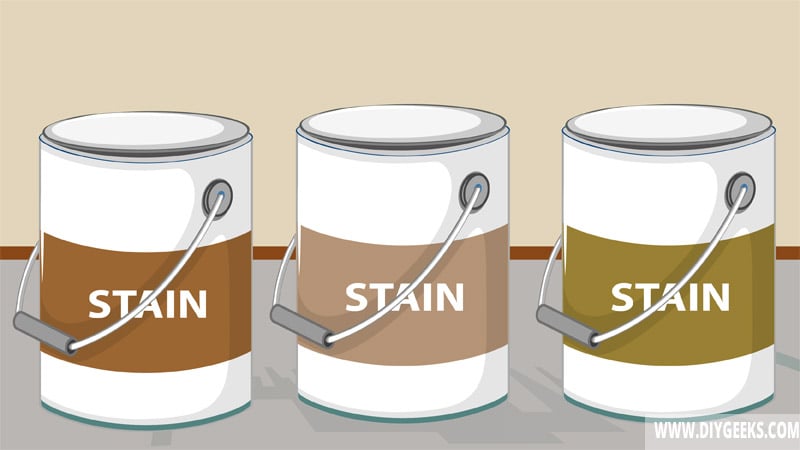
You can use oil-based wood stain on Teak wood because its solvent (oil) is compatible with the natural oils of the wood. Since they are compatible, applying a sanding sealer is optional.
You can use water-based or gel stain too, but you must seal the surface with sanding sealer. An over-absorption of water-based wood stain or gel stain will damage the Teak wood or ruin the finish.
Water-based wood stain uses water as its solvent, and having too much solvent on the surface can damage the wood.
How To Stain Teak Wood?
To stain Teak wood, do the following things.
- Prep the Surface.
- Sand the Surface.
- Apply Sanding Sealer.
- Apply the Wood Stain.
Staining Teak wood is easy because it has large pores that accept finishes easily. However, you must prep it properly to prevent over-absorption, which can lead to a blotchy finish or damaged wood.
The tools you need for this project are listed below.
- Fine-grit sandpaper
- Rags
- Mineral spirits
- Paintbrushes
- Wood filler
- Lint-free cloths
- Sanding sealer
- Polyurethane varnish
- A paint bucket
- A drop sheet
- Paint stripper or acetone
- A vacuum or duster
1. Prep the Surface
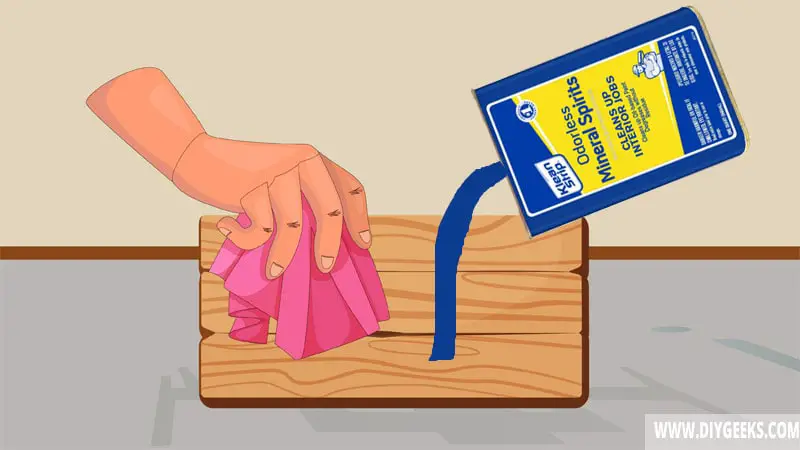
Clean the Teak wood surface with soapy water to remove dust and dirt that can prevent wood stains from adhering.
If the Teak wood is painted or sealed, remove the existing finish with coarse-grit sandpaper (40-grit) or paint-stripping paste.
Wood stain is a penetrating finish that needs to penetrate the wood pores to stick. But, if the wood pores are filled with paint or sealer, the stain won’t stick since it can’t penetrate it. To remove an existing finish, use a paint stripper compound.
2. Sand the Surface

Sand the Teak wood with medium-grit sandpaper (100-grit) to remove surface imperfections, even (flat) the wood, and make it smooth. If the wooden surface is rough or patchy, use coarse-grit sandpaper (40-grit).
After removing the surface imperfections, use fine-grit sandpaper (220-grit) to smoothen the wooden surface and make it ready for staining.
3. Apply Sanding Sealer
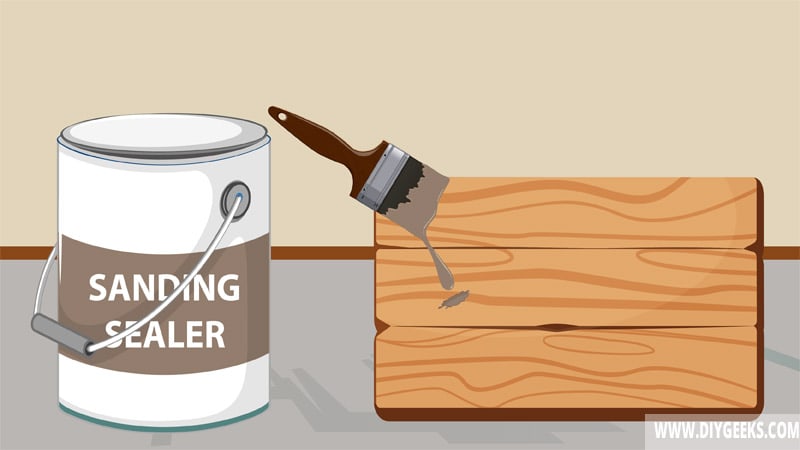
Apply two (2) thin sanding sealer coatings over the Teak wood to cover its pores and prevent wood stain over-absorption. Wait until one coating dries, wipe the excess, and apply the next coating.
Once the sanding sealer coatings dry, use fine-grit sandpaper (220-grit) to smoothen its coating.
Related Read: Can You Apply Stain Over Sanding Sealer?
4. Apply the Wood Stain
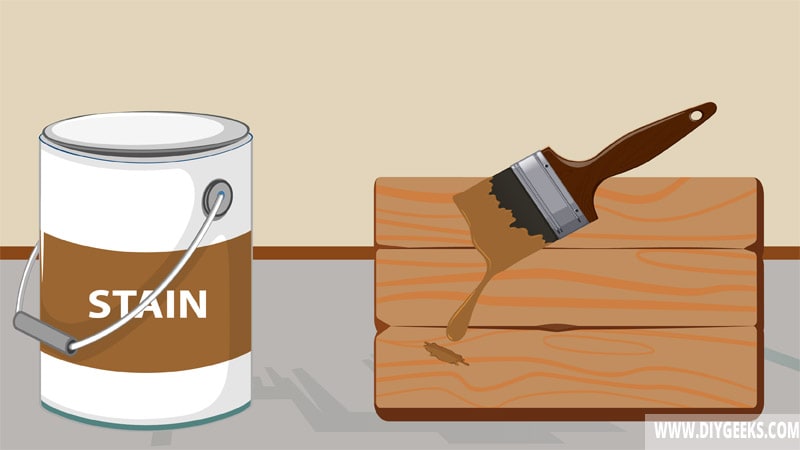
Apply three (3) light oil-based wood stain coats over Teak wood using a paintbrush or lint-free rag. Wait until one coat dries, wipe the excess, and apply the next coat.
Seal the stained Teak wood finish with polyurethane or varnish to increase its durability and moisture-resistance.
Can You Stain Teak Wood Any Color?
You can stain Teak wood any color, but using a colored finish will hide its natural beauty and its patterns. It’s recommended to use a transparent finish to enhance its natural features and grain.
You can use an amber (or gold-like) color finish because they match the wood’s original color.
Teak wood has a natural light-to-dark brown color. The color highlights the grain pattern and curves on the surface, creating a beautiful natural appearance. This natural appearance is why most homeowners use it in their homes.
You can also choose to darken the Teak wood. To do so, apply extra coats of gel stain or seal the finish with wax. If you want to lighten the wood color shade, seal the finish with polyurethane.
What are The Benefits of Staining Teak Wood?
The benefits of staining teak wood are as follows.
- It beautifies the wood.
- Improves scratch, dent, and moisture resistance.
- Helps the wood last longer.
- Highlights the curves and patterns of the wood grain.
- Exterior wood stain protects the wood from weather elements.
- You can get a mirrored finish.
- You can change the finish anytime.
- It’s an affordable finish.
